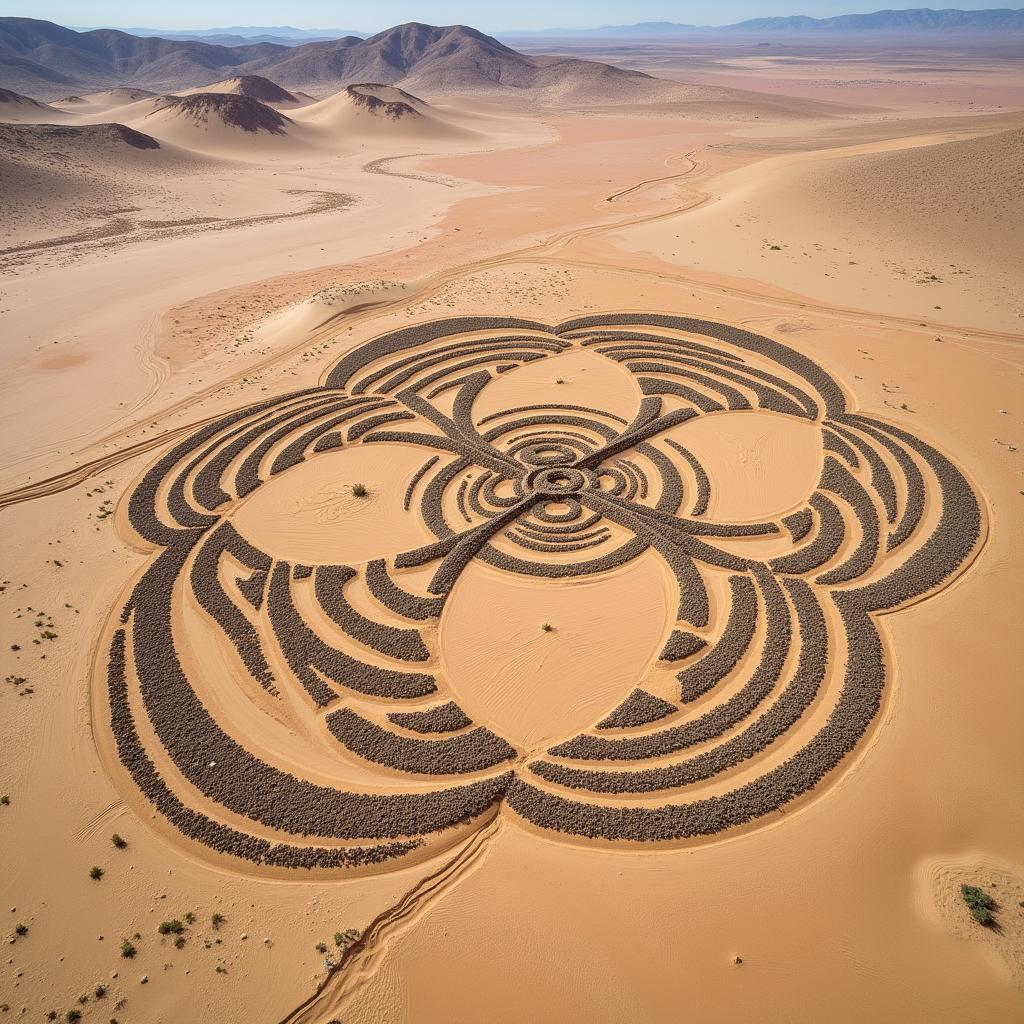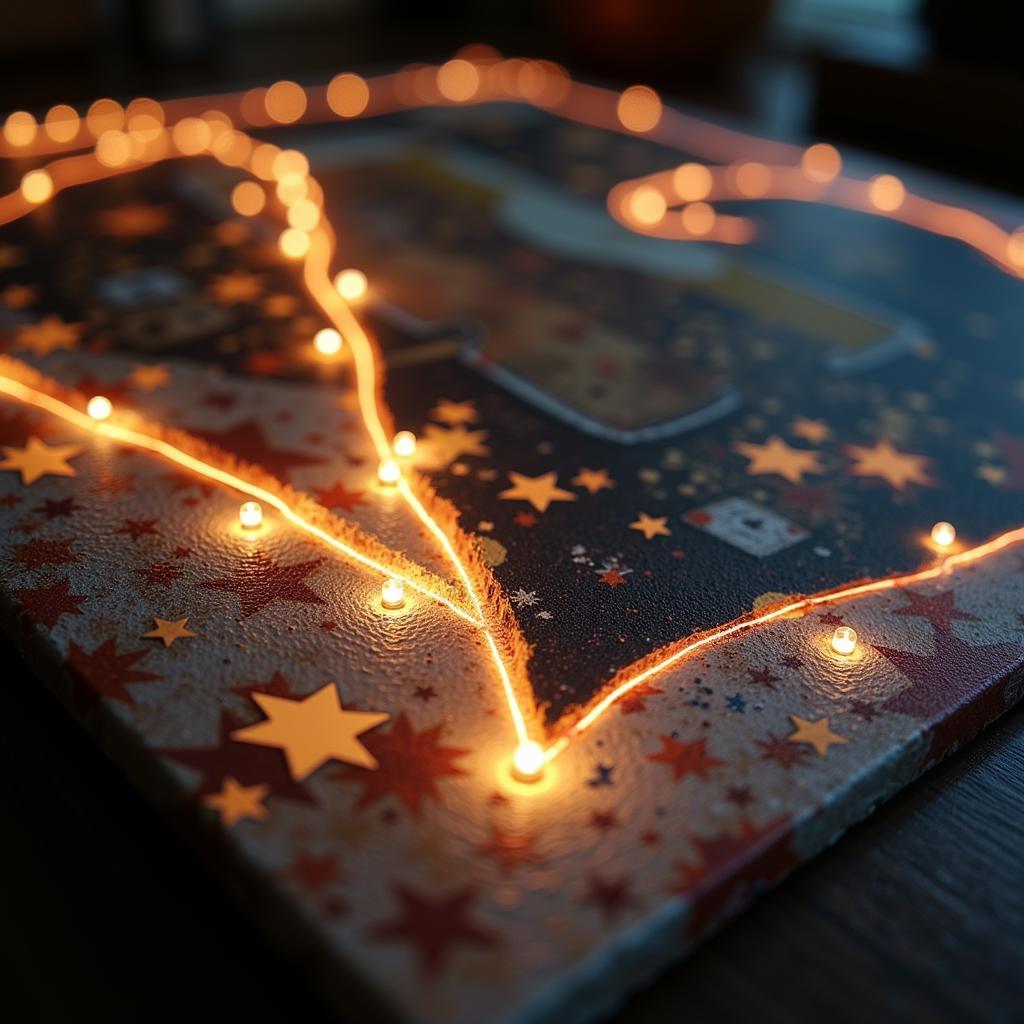Grounded Art: Reconnecting Creativity with the Earth
In a world saturated with digital stimulation, Grounded Art emerges as a refreshing counterpoint, reminding us of the profound beauty and inspiration found in the natural world. This artistic approach transcends mere depiction of landscapes or wildlife; it’s about tapping into the raw, elemental forces of the Earth to fuel creativity and ground ourselves in the present moment.
Earthing Your Artistic Vision: The Principles of Grounded Art
Grounded art embraces a mindful approach to creation, encouraging artists to connect with the Earth’s energy and draw inspiration from its textures, forms, and processes. It’s about slowing down, observing the subtle details of the natural world, and allowing those observations to inform artistic choices.
Here are some key principles that define grounded art:
- Materiality: Grounded artists often gravitate towards natural materials like clay, wood, stone, and found objects. These materials possess an inherent connection to the Earth, carrying within them the stories of their formation and the passage of time.
- Process over Product: The act of creation is just as important as the final artwork in grounded art. Artists embrace the imperfections and unexpected outcomes that arise from working with natural elements, recognizing that these imperfections often lead to unique and unexpected beauty.
- Sense of Place: Grounded art often reflects a deep connection to a particular place, whether it’s a local park, a wild coastline, or even a backyard garden. Artists seek to capture the essence of these places, translating their unique energy and character into their work.
Finding Your Footing: Exploring Different Forms of Grounded Art
Grounded art manifests in a myriad of forms, from large-scale land art installations that transform entire landscapes to intimate sculptures crafted from found objects.
 Land Art Installation in Desert
Land Art Installation in Desert
Here are a few examples of how artists are exploring grounded art:
1. Land Art: Earth as Canvas
Land art, also known as Earth art, emerged in the 1960s as a way for artists to break free from the confines of traditional galleries and engage directly with the natural world. Land artists use the Earth itself as their canvas, creating ephemeral or permanent works that interact with the landscape in profound ways.
2. Environmental Art: Raising Awareness Through Creativity
Environmental art often carries a social or political message, using art as a tool to raise awareness about environmental issues and advocate for change. These artists might create installations from recycled materials, craft sculptures that highlight the beauty of endangered species, or stage performances that draw attention to climate change.
3. Bio Art: The Intersection of Art and Biology
Bio art pushes the boundaries of traditional art making by incorporating living organisms or biological processes into the creative process. This can involve anything from growing sculptures from mycelium (the root structure of fungi) to using bacteria to create pigment for paintings.
Why Grounded Art Matters: Reconnecting with Ourselves and the Planet
In a world grappling with climate change and ecological crises, grounded art offers a powerful reminder of our interconnectedness with the natural world. By engaging with the Earth through art, we can cultivate a deeper appreciation for its beauty, fragility, and resilience.
For artists, grounded art provides an opportunity to tap into a wellspring of creative inspiration. By grounding ourselves in the natural world, we can break free from creative blocks, expand our artistic vocabulary, and create work that feels authentic and meaningful.
 Woman Creating Grounded Art on Beach
Woman Creating Grounded Art on Beach
Grounding Your Own Creative Practice
Whether you’re a seasoned artist or just starting to explore your creative side, there are countless ways to incorporate the principles of grounded art into your practice. Here are a few ideas to get you started:
- Take a nature walk with the intention of gathering inspiration. Notice the textures, colors, and patterns that catch your eye. Collect small objects like leaves, stones, or twigs to use in your artwork.
- Experiment with natural materials. Try your hand at sculpting with clay, carving wood, or creating land art installations in your backyard. Don’t be afraid to get messy and embrace the unpredictable nature of working with natural elements.
- Create art in nature. Set up your easel outdoors and paint a landscape en plein air. Find a secluded spot in the woods and create a temporary mandala from found objects. The possibilities are endless.
The most important thing is to approach your practice with an open mind and a willingness to connect with the Earth’s energy. By grounding ourselves in the natural world, we can tap into a boundless wellspring of creative potential and create art that is both personally meaningful and deeply connected to the world around us.
FAQ: Exploring Grounded Art Further
1. What is the main goal of grounded art?
Grounded art seeks to reconnect artmaking with the natural world. It emphasizes using natural materials, incorporating natural processes, and reflecting a deep appreciation for the Earth’s beauty and power.
2. What are some examples of famous land artists?
Some of the most renowned land artists include Robert Smithson, known for his iconic “Spiral Jetty,” and Andy Goldsworthy, celebrated for his ephemeral sculptures created from natural materials found on site.
3. Do I have to be a professional artist to create grounded art?
Absolutely not! Grounded art is for everyone. It’s about connecting with your creativity and finding inspiration in the natural world, regardless of your skill level.
4. What are some ways to get started with grounded art if I live in an urban environment?
Even in urban settings, you can find pockets of nature to inspire you. Visit local parks, botanical gardens, or even just observe the plants and trees growing in your neighborhood. You can also incorporate natural elements into your artwork by using found objects, recycled materials, or even just incorporating natural light and shadows into your compositions.
5. Where can I learn more about grounded art?
There are many resources available online and in libraries that explore grounded art in greater depth. You can also seek out workshops, classes, and exhibitions that focus on this artistic approach.
Need Help Finding Your Artistic Footing?
At “Online Art workshops,” we’re passionate about helping artists of all levels connect with their creativity and explore new artistic avenues. If you’re interested in learning more about grounded art or any other art form, please don’t hesitate to contact us.
Call us: 02462573573
Email: danteum@gmail.com
Visit us: Savico Megamall, 7-9 Đ. Nguyễn Văn Linh, Gia Thụy, Long Biên, Hà Nội 10000, Việt Nam.
Our team is available 24/7 to answer your questions and provide personalized support. We also invite you to explore our other online resources, including articles on astrology signs art, tips for choosing the perfect wall art burnt orange, and insights into the world of blue grey abstract art.
Looking for more in-depth learning? Check out our catholic art book or immerse yourself in the dynamic world of jim aparo batman art.
Let us help you unearth your artistic potential and embark on a journey of creative discovery!


